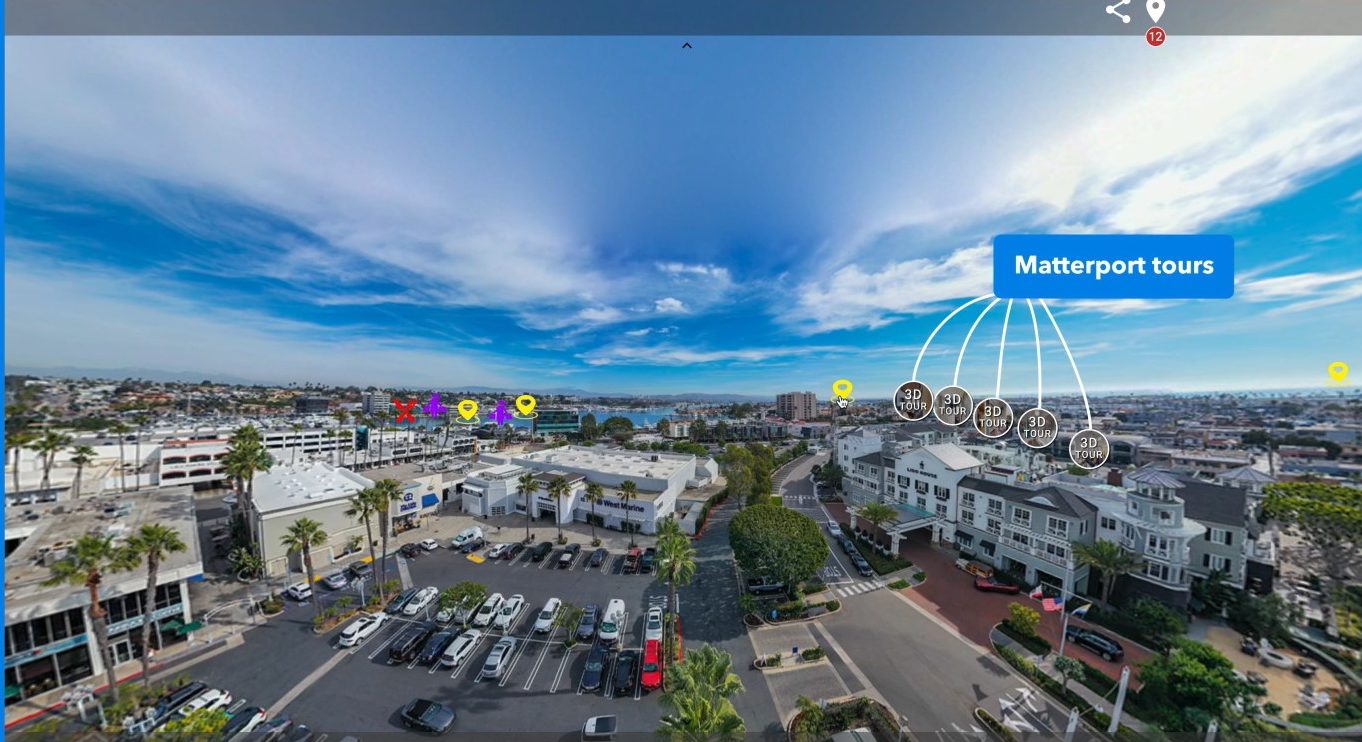real or virtual image
Real or Virtual Image: A Comprehensive Guide for Photographers and Real Estate Professionals
Excerpt:
Understanding the nature of real and virtual images is foundational for professionals working with visual technologies—particularly photographers and real estate agents utilizing 360-degree virtual tours. Whether you’re capturing immersive scenes or showcasing properties through virtual walkthroughs, knowing how images form and behave can dramatically influence the quality and effectiveness of your visual content. This blog post explores the science behind real and virtual images, their characteristics, and how this knowledge can elevate your use of platforms like www.threesixty.tours for creating stunning, interactive experiences.
II. Fundamental Concepts of Imaging
To understand how real and virtual images form, you need to know a bit about how light behaves. Don’t worry—we’ll keep it simple and practical.
A. Light Behavior and Its Interaction with Lenses and Mirrors
Light travels in straight lines. When it hits a surface, it either bounces off or bends. These two behaviors—reflection and refraction—are the foundation of image formation.
- Reflection: This happens when light bounces off a surface, like a mirror. The angle it hits the surface equals the angle it leaves. This is how virtual images are created in mirrors.
- Refraction: This occurs when light bends as it passes from one material to another, like from air into glass. Lenses use refraction to focus light and form images.
There are different types of mirrors and lenses. Concave and convex lenses, flat and curved mirrors—all of these shape how light moves and where images form. Knowing how each one works helps photographers pick the right gear and helps virtual tour creators simulate realistic visuals.
B. Image Formation
Here’s a simple equation that tells us where an image will form:
- 1/f = 1/do + 1/di
In this equation:
- f is the focal length of the lens or mirror.
- do is the distance from the object to the lens.
- di is the distance from the lens to the image.
If the light rays actually meet, the image is real. If they only appear to meet, the image is virtual. For photographers, this formula helps with focus and lens selection. For virtual tour creators using www.threesixty.tours, it helps create scenes that feel natural and immersive by aligning with how the human eye perceives space. Understanding these basics lets you control how light behaves in your visuals—whether you’re capturing a perfect shot or designing a virtual space.
III. Characteristics of Real Images
Real images are key in photography and any visual medium where accuracy and clarity matter. Let’s explore what makes them special.
A. Definition and Formation of Real Images
A real image forms when light rays actually converge at a point. You can project it onto a screen or camera sensor. This is what happens inside your camera when you take a photo. With a convex lens (the most common type in cameras), placing your subject beyond the focal point creates a real image. It’s usually upside-down, but your camera or editing software flips it for you.
B. Properties of Real Images
- 1. Inverted Orientation: Real images are typically upside-down. Cameras correct this, but knowing about it helps when choosing lenses or editing images.
- 2. Can Be Projected: You can project real images onto surfaces. This is essential in photography, where the image must hit a sensor or film to be captured.
- 3. Size and Position Depend on Distance: The closer the object is to the focal point, the larger and farther away the image appears. This helps control composition and depth of field.
C. Examples of Real Images in Everyday Life
- 1. Projectors: They use lenses to create real images on screens. The image’s clarity depends on lens quality and distance.
- 2. Cameras: Every time you snap a photo, your camera lens creates a real image on the sensor. Understanding this helps you adjust focus and depth of field. For users of www.threesixty.tours, knowing how real images work helps when capturing 360-degree panoramas. It ensures you get clear, properly oriented visuals that stitch together smoothly.
IV. Characteristics of Virtual Images
Virtual images don’t form on screens, but they’re crucial in creating realistic, immersive visuals—especially in virtual tours.
A. Definition and Formation of Virtual Images
A virtual image forms when light rays diverge, and your brain interprets them as coming from a point they never actually reach. These images appear behind mirrors or lenses when the object is placed within the focal length. For example, a magnifying glass creates a virtual image when you hold it close to an object. The image looks bigger and upright.
B. Properties of Virtual Images
- 1. Upright Orientation: Unlike real images, virtual images are right-side up. This makes them ideal for mirrors, webcams, and virtual tours.
- 2. Cannot Be Projected: Since the light rays don’t actually meet, virtual images can’t be displayed on a screen or sensor.
- 3. Observer-Dependent: Virtual images change based on where you’re standing. This is especially important in 360-degree photography, where perspective matters.
C. Examples of Virtual Images in Everyday Life
- 1. Mirrors: When you look in a mirror, you see a virtual image of yourself. The light seems to come from behind the mirror, but it doesn’t.
- 2. Magnifying Glasses: Used in macro photography, magnifying glasses create enlarged virtual images. This helps in close-up shots where detail is key. In platforms like www.threesixty.tours, virtual images are critical. The platform stitches multiple images to create a 360-degree view that feels real. Knowing how virtual images behave helps in capturing and editing scenes for a seamless experience.
V. Comparison Between Real and Virtual Images
Let’s put real and virtual images side by side to better understand their differences and how they affect your work.
A. Key Differences
- Formation: Real images form when light rays meet; virtual images form when rays only appear to meet.
- Orientation: Real images are inverted; virtual images are upright.
- Projection: Real images can be projected; virtual images cannot.
- Observer Dependence: Virtual images change with the viewer’s position; real images do not.
B. Situational Examples
- Photography: When photographing a room for a virtual tour, using a wide-angle lens creates a real image that can be digitally adjusted. Knowing how the image forms helps in editing and stitching.
- Virtual Tours: On www.threesixty.tours, the final tour is a blend of virtual images. Understanding how these images interact helps you create smoother transitions and more lifelike scenes.
C. Practical Applications
- Real Estate: Agents can use this knowledge to explain how virtual tours work and why they look realistic. It helps in building trust with clients.
- Photography: Photographers can choose the right gear and settings to ensure every image contributes to a cohesive 360-degree experience.
VI. Tips for Applying Image Knowledge in Your Work
Here are some tips to enhance your work:
- 1. Choose the Right Lens: Understanding focal length and image formation helps you select the best lens for your goals—whether it’s wide-angle for interiors or telephoto for details.
- 2. Plan Your Shots: Knowing where and how images form can help you plan better compositions. This is especially useful in 360-degree photography where every angle counts.
- 3. Edit with Purpose: When stitching images for a virtual tour, knowing whether they’re real or virtual helps you correct orientation, lighting, and perspective.
- 4. Create Immersive Experiences: Use your understanding of image behavior to design virtual tours on www.threesixty.tours that feel natural and intuitive to the viewer.
VII. External Resources for Deeper Learning
Want to dive deeper into the science of image formation? Check out these helpful resources:
- 1. Khan Academy’s Optics Course: A great place to learn the physics behind lenses and mirrors in a clear, visual format. https://www.khanacademy.org/science/physics/geometric-optics
- 2. Cambridge in Colour: Offers in-depth guides on photography optics, lens behavior, and image quality. https://www.cambridgeincolour.com
These resources complement your hands-on experience and help you make the most of platforms like www.threesixty.tours.
VIII. Conclusion
Understanding the difference between real and virtual images isn’t just a science lesson—it’s a practical tool that can transform your visual content. Whether you’re a photographer capturing breathtaking shots or a real estate agent designing immersive virtual tours, this knowledge gives you the edge.
We’ve covered how images form, what makes them real or virtual, and how this all applies to your work. You’ve seen how it affects lens choices, editing, and the overall viewer experience. As you continue to create and innovate, let your understanding of image formation guide you.
It’s the key to producing visuals that are not only beautiful but also deeply engaging. Ready to take your virtual tours to the next level? Sign up for a free trial at www.threesixty.tours and start building immersive, visually stunning experiences today.


